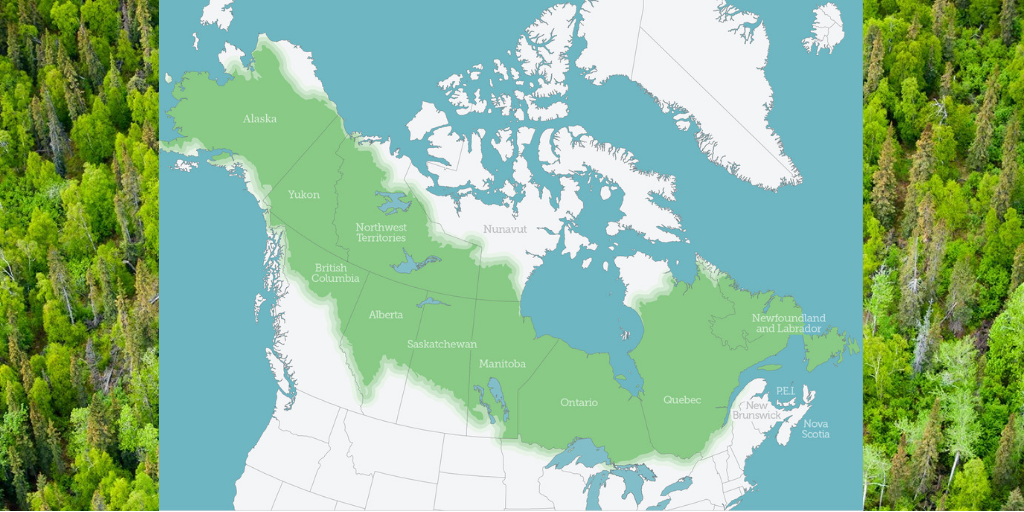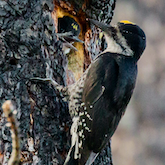North America's last great forest- the boreal- extends across the continent from Newfoundland to Alaska. This vast wilderness is sometimes referred to as "North America's bird nursery," as nearly half of the common bird species in the U.S. and Canada rely on the boreal for breeding habitat or migration refueling. Much of the boreal forest is intact and relatively undisturbed by human activities, but that is changing. Climate change, oil and gas development and other factors are increasingly impacting this vital habitat.
"The North American boreal forest provides breeding, stopover, and winter habitat for billions of birds representing hundreds of species, yet we know remarkably little about the status and trends of most of these populations," says Dr. Jim Saracco, Research Ecologist with The Institute for Bird Populations. In a new paper in Avian Conservation and Ecology, which Saracco co-authored, scientists identify the challenges facing bird monitoring efforts in the boreal forest, review the currently available data and monitoring programs operating in the boreal forest, and offer some recommendations for future bird monitoring efforts in this vital region.

Blackpoll Warblers are one of hundreds of bird species that breed in the Boreal Forest. Photo by Scott Heron/Flickr.
"We need to apply all of the tools at our disposal to better understand boreal bird populations and how they may respond to these threats," says Saracco. "This includes understanding and leveraging all of the existing data sets and applying the latest analytical tools to extract as much information from them as possible." The data sets include abundance surveys, like the Breeding Bird Survey (BBS) and the Christmas Bird Count (CBC), as well as capture-mark-recapture efforts like IBP's MAPS (Monitoring Avian Productivity and Survivorship) program.
The scientists also discuss how new techniques in statistical analysis and mathematical modeling can be used to better understand changes in boreal bird populations. "We've learned a lot about sampling designs, data needs, and modeling in the years since programs like the BBS and MAPS were developed," says Saracco. "There is an opportunity to learn from these earlier efforts, as well as from these recent advances to do a better job moving forward."
Still more data are needed. "Better monitoring of boreal bird populations will require expanding and improving existing monitoring programs to fill data gaps as efficiently as possible," says Saracco. This includes expanding coverage of programs like MAPS, but also trying new monitoring techniques that may be well suited to more inaccessible areas of the boreal. "For instance, autonomous recording units– unmanned devices that record bird vocalizations– show great promise as an alternative to human surveyors in areas that are difficult to reach on foot or by road," says Michel.
Finally, the scientists say collaboration will be critical to understanding boreal bird populations. The boreal forest extends across multiple management units, spanning two countries, and dozens of First Nations territories and Alaska Native Corporations. Likewise, multiple researchers from a variety of government agencies, universities, and non-governmental organizations are conducting ongoing bird monitoring efforts across the region. "Coordinating these efforts will be key," says Michel. "Collaborative planning and monitoring to enable integrated modeling is essential to meet the challenges of monitoring birds across this vast, remote region and inform effective conservation of boreal birds and their habitats despite their many threats," says Michel.
IBP will continue to be a part of the effort to monitor boreal birds through its coordination of the MAPS program, as well as its participation in the North American Bird Conservation Initiative. "North America's bird nursery" is critical for the survival of the so many of the Western Hemisphere's birds, and effective conservation of these species requires solutions grounded in sound science.





